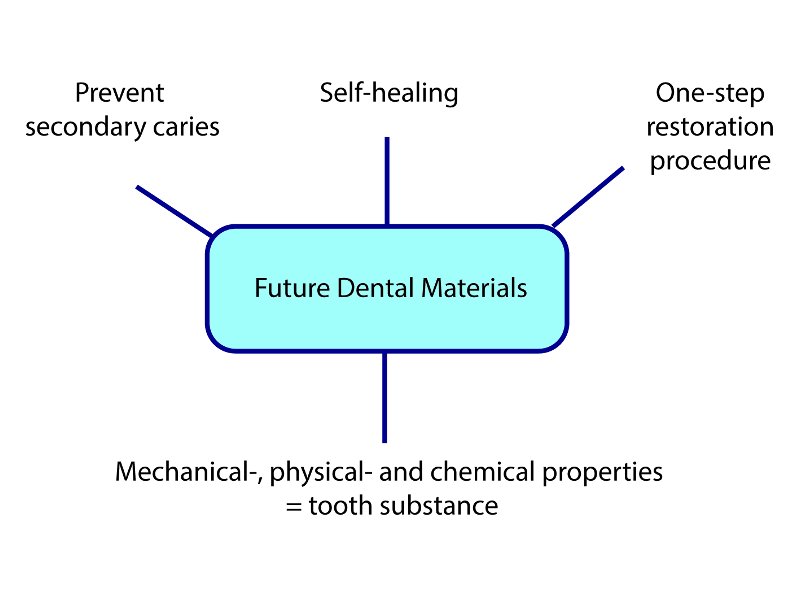How can dental materials be made better?

Future dental materials must combat the reasons current materials fail.
Self-healing materials.
Future resin-based dental materials must combat the reasons current materials fail, mainly secondary caries and fracture, but still be easy for the dentist to use and safe for the patient.
Ideally, materials should be capable of binding directly to enamel and dentin. This would simplify the restoration procedure and make it less technique sensitive. To reduce secondary caries, materials able to prevent biofilm formation and growth on their surface are needed. Future materials must show higher resistance against the mechanical and biochemical challenges of the oral cavity, and preferably have equal or better mechanical-, physical- and chemical properties compared to those of natural tooth substance.
How to achieve this?
- The development of universal adhesives, dual-cure and bulk-fill composites simplify the restoration procedure. A restoration requires hydrophilic tooth substance to be replaced with hydrophobic materials. To achieve equal or better properties than those of tooth substance, future materials must be based on new chemistry that also takes into account the biological properties of enamel and dentin.
- Materials with antimicrobial components have been developed to fight secondary caries. An alternative is to incorporate substances that disrupt the adherence of bacteria to the material surface and formation of biofilm.
- Methacrylate-based polymers are susceptible to chemical and biochemical degradation in the oral cavity. Many alternative polymers are being investigated; the challenge is achieving good mechanical-, physical- and chemical properties.
- Self-healing materials seal initial cracks and prevent fracture.
Read more:
Viktige egenskaper ved fremtidens dentalmaterialer
Stenhagen I. S. R., Dahl J. E.
Aktuel Nordisk Odontologi, 01/2019 (Volume 44): 159-172.

